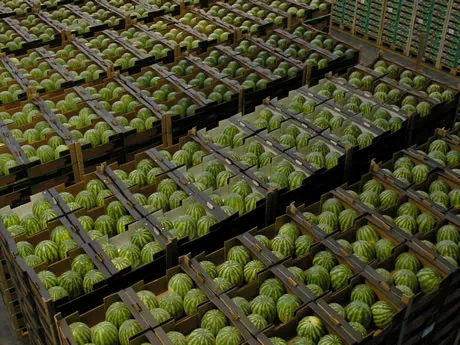The melon market is currently characterised by more than sufficient stocks. “Stocks of Cantaloupe melons are high in particular, and the good weather of the past week didn’t result in a reduced stock. There are also too many watermelons for the market, these productions are considerably higher than in recent years,” says commercial manager Leon van den Hombergh of Frankort&Koning. “We are now going through the stocks of Galia and Piel de Sapo melons quite nicely, and the stocks of yellow melons is becoming a bit more limited as well.”
“The large stocks are the result of Brazil continuing longer, and melons from particularly Honduras arrived on the market earlier. Because the North American market was very bad, exporters went to the European market more. In a period when consumption isn’t that high yet, this’ll result in a large supply of melons on the European market this week and next week at least, and it’s very difficult to achieve prices at a normal level,” Leon continues.

“The volume of Galias is now levelling off. The Brazilian Galia season is over now, and only Honduras is left on the market, which should definitely lead to a recovering market with smaller stocks. Yellow melons are still available from Costa Rica, Honduras and Brazil, and these prices just about cover costs. The weeks up to week 10 are traditionally the worst in melon sales, but we need an incredibly positive weather forecast to get through this,” Leon says.
“All in all, hope is now pinned on a market recovery, but the window in which the market situation can be improved is becoming smaller. Before you know it, Morocco, Spain and Italy will be ready to start their seasons. It’s currently very warm in Spain, and the early melons have already been sown. Traditionally, Morocco starts with Charentais melons in March, and Sicily will soon start as well. We’re therefore hoping demand for overseas melons will recover quickly,” Leon concludes.
 For more information:
For more information:
Leon van den Hombergh
Frankort & Koning
Venrayseweg 126
5928 RH Venlo, the Netherlands
Tel: +31 (077) 389 72 72
Fax: +31 (077) 382 61 34
l.vdhombergh@frankort.nl
www.frankort.nl
